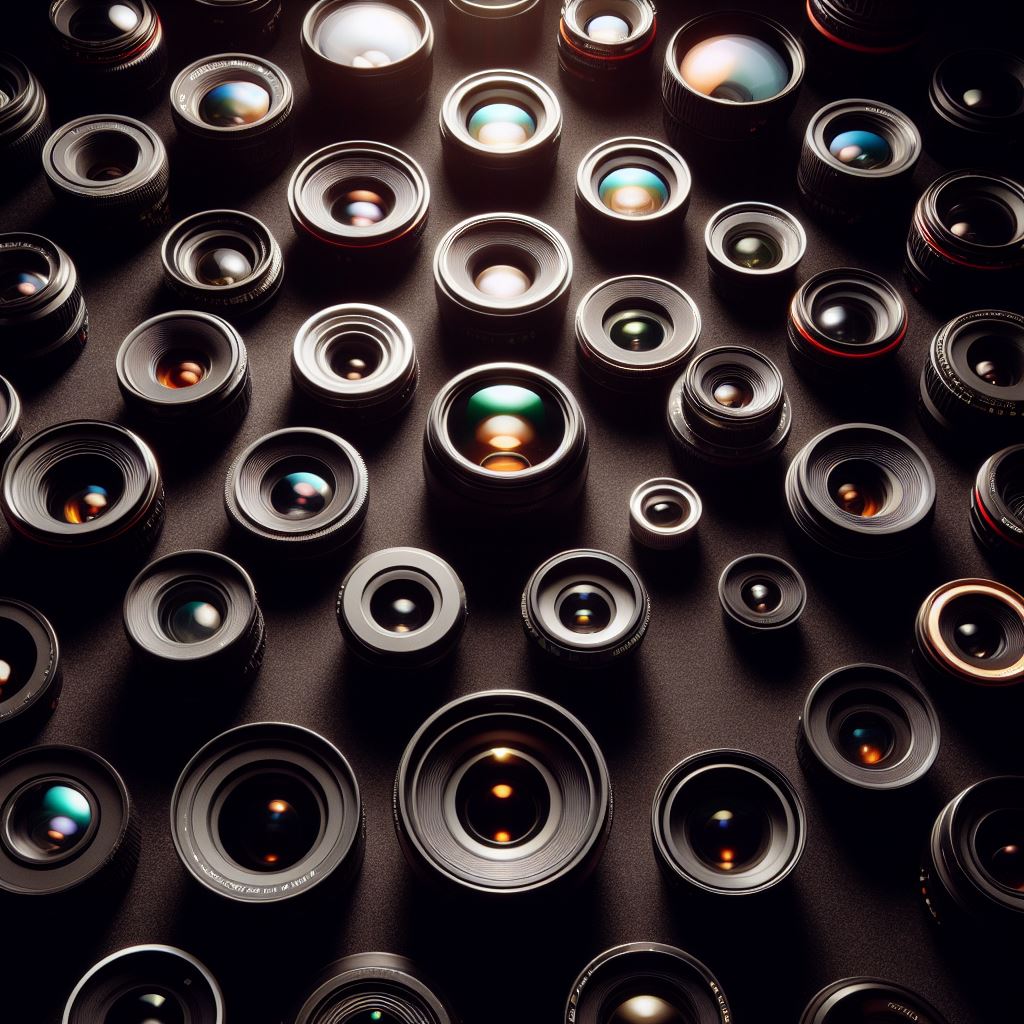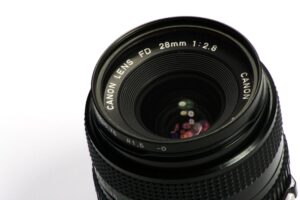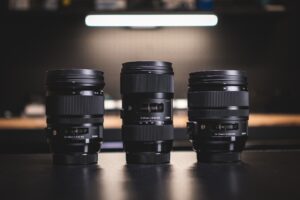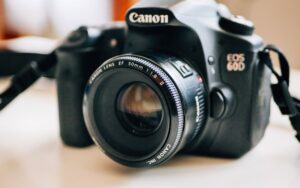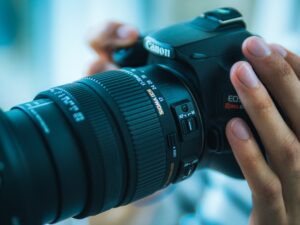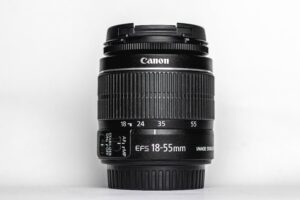If you are new to photography, you might be wondering what are the different camera lens types and how they affect your images.
Choosing the right lens for your camera can make a huge difference in the quality and style of your photos.
But with so many options available, how do you know which one to pick?
In this article, we will provide you with in-depth guides, reviews and tutorials on various lens types for beginner photographers.
You will learn about the main characteristics, advantages and disadvantages of each lens type, as well as some examples of their uses and effects.
By the end of this article, you will have a better understanding of how to choose the right lens type for your photography needs.
Key Takeaways
| Lens Type | Focal Length | Advantages | Disadvantages | Uses |
|---|---|---|---|---|
| Prime | Fixed | High image quality, large aperture, light weight, low price | No zoom, less versatile | Street, portrait, headshot, etc. |
| Zoom | Variable | Zoom, versatile, convenient | Lower image quality, smaller aperture, heavy weight, high price | General purpose, wedding, sports, etc. |
| Wide-Angle | < 35mm | Wide field of view, depth and perspective, creative effect | Distortion, flare, vignetting | Landscape, architecture, environmental portrait, etc. |
| Ultra-Wide-Angle / Fisheye | < 14mm | Extremely wide field of view, circular effect, artistic effect | Severe distortion, limited use | Creative shots, interiors, astrophotography, etc. |
| Standard / Kit | 35-85mm | Natural-looking images, similar to human eye view | Not very special or unique | Documentary, everyday, close-up portrait, etc. |
| Telephoto | > 85mm | Magnify distant subjects, shallow depth of field, bokeh effect | Heavy weight, high price, camera shake | Macro, candid portrait, wildlife, etc. |
| Super-Telephoto | > 400mm | Capture extreme details of very distant subjects, compression effect | Very heavy weight, very high price, tripod required | Bird, safari, moon, etc. |
| Specialty | Unique features or functions | Special effects or problem-solving | Niche or specific use cases | Tilt-shift for perspective control; macro for close-up; fisheye for circular images; etc. |
Prime Lenses

Prime lenses are lenses with a fixed focal length.
This means that they cannot zoom in or out. You have to move closer or farther away from your subject to change the composition of your image.
Prime lenses have several advantages over zoom lenses.
They usually have higher image quality because they have fewer optical elements and less distortion.
They also have larger apertures (smaller f-numbers) which allow more light to enter the lens and create a shallow depth of field.
This means that you can achieve a blurred background (also known as bokeh) and isolate your subject from the surroundings.
Another benefit of prime lenses is that they are lighter and cheaper than zoom lenses. They are easier to carry around and more affordable for beginners.
The main disadvantage of prime lenses is that they are less versatile than zoom lenses.
You have to change lenses more often if you want to capture different scenes or subjects.
You also have to move around more to get the right framing and angle.
Some common prime lens focal lengths and their uses are:
- 35mm: This is a popular focal length for street photography because it captures a wide enough view without distorting the edges too much. It also creates a natural-looking perspective that mimics the human eye.
- 50mm: This is often called the “nifty fifty” because it is a versatile and inexpensive lens that can be used for various purposes. It is ideal for portraits because it produces flattering facial features and a nice bokeh effect.
- 85mm: This is a great focal length for headshots because it compresses the background and makes the subject stand out more. It also minimizes any facial distortion that might occur with wider lenses.
If you want to learn more about prime lenses – in particular what a 50mm lens is good for – check out our full guide here.
Zoom Lenses
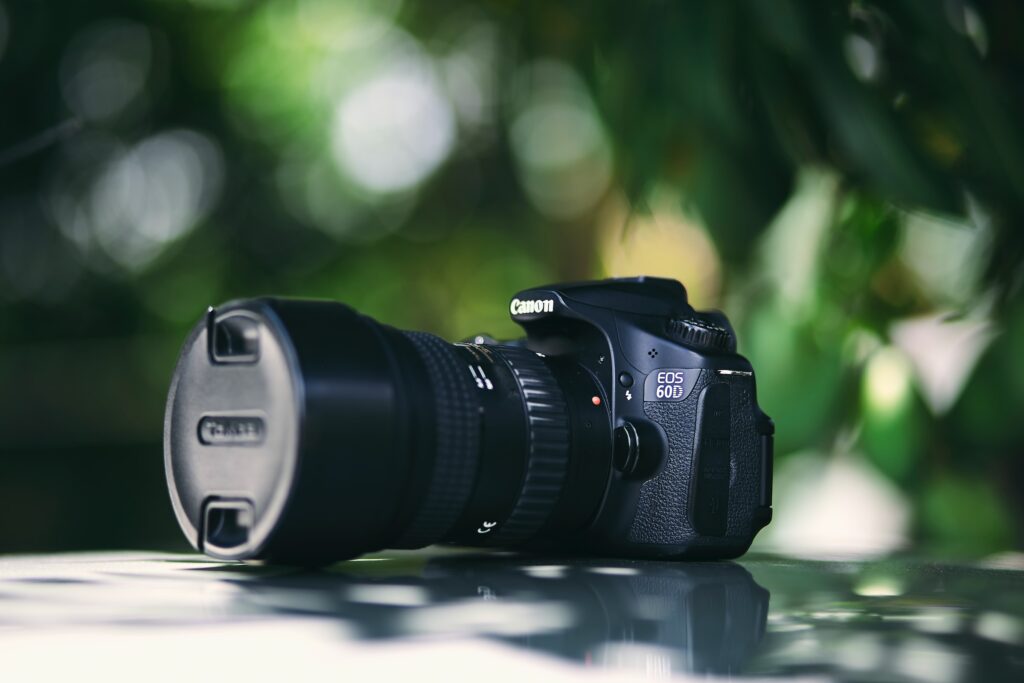
Zoom lenses are lenses with a variable focal length. This means that they can zoom in or out by changing the distance between the optical elements inside the lens.
Zoom lenses have several advantages over prime lenses.
They are more versatile and convenient because they allow you to change the focal length without changing the lens or moving around. You can capture different scenes or subjects with one lens.
Another benefit of zoom lenses is that they are more flexible and adaptable to different situations. You can adjust the focal length according to the available light, distance or angle.
The main disadvantage of zoom lenses is that they usually have lower image quality than prime lenses.
They have more optical elements and more distortion which can affect the sharpness and contrast of the images.
They also have smaller apertures (larger f-numbers) which limit the amount of light that enters the lens and create a deeper depth of field.
This means that you cannot achieve a blurred background as easily as with prime lenses.
Another drawback of zoom lenses is that they are heavier and more expensive than prime lenses. They are harder to carry around and more costly for beginners.
Some common zoom lens ranges and their uses are:
- 18-55mm: This is a standard kit lens that comes with most entry-level DSLR or mirrorless cameras. It covers a wide range of focal lengths from wide-angle to standard to telephoto. It is suitable for general purpose photography such as landscapes, portraits, events, etc.
- 24-70mm: This is a professional-grade zoom lens that offers high image quality and performance. It covers a similar range as the kit lens but with a larger aperture and better optics. It is ideal for weddings, journalism, travel, etc.
- 70-200mm: This is a telephoto zoom lens that allows you to capture distant subjects such as sports, wildlife, concerts, etc. It has a large aperture and a fast autofocus system. It also creates a beautiful bokeh effect and isolates the subject from the background.
Curious about the differences between zoom and prime lenses? Check out our article zoom lenses vs prime lenses.
Wide-Angle Lenses
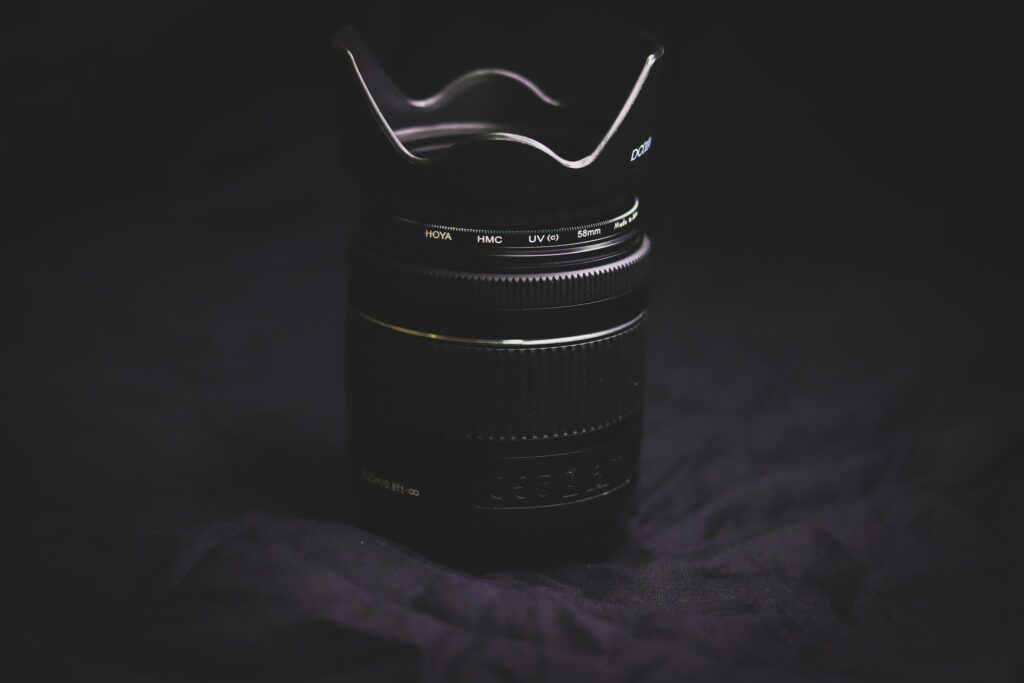
Wide-angle lenses are lenses with a focal length shorter than 35mm. This means that they can capture a wider field of view than the human eye can see.
Wide-angle lenses have several advantages over other lens types. They can create a sense of depth and perspective in the images by exaggerating the distance between the foreground and the background.
They can also fit more of the scene into the frame, which is useful for landscapes, architecture, interiors, etc.
Another benefit of wide-angle lenses is that they can create a creative or dramatic effect in the images by distorting the edges or corners of the frame. This can add some interest or fun to the photos.
The main disadvantage of wide-angle lenses is that they can also create unwanted distortion, flare or vignetting in the images.
Distortion is when straight lines appear curved or bent in the images. Flare is when bright light sources create streaks or spots in the images. Vignetting is when the corners of the images are darker than the center.
Another drawback of wide-angle lenses is that they are not very flattering for portraits or close-ups. They can make the subject look distorted or unnatural, especially if they are near the edges of the frame.
Some common wide-angle lens focal lengths and their uses are:
- 14mm: This is an ultra-wide-angle lens that can capture an extremely wide field of view of about 114 degrees. It can create a circular or fisheye effect in the images. It is ideal for landscapes, astrophotography, creative shots, etc.
- 24mm: This is a wide-angle lens that can capture a wide field of view of about 84 degrees. It can create a natural-looking perspective and depth in the images. It is ideal for architecture, interiors, environmental portraits, etc.
- 28mm: This is a wide-angle lens that can capture a slightly narrower field of view of about 75 degrees. It can create a realistic and balanced perspective and depth in the images. It is ideal for street photography, documentary photography, group shots, etc.
Want to learn more about wide angle lenses? Check out our article here.
Ultra-Wide-Angle / Fisheye Lenses

Ultra-wide-angle lenses are lenses with a focal length shorter than 14mm.
They are also known as fisheye lenses because they can capture an extremely wide field of view of more than 180 degrees. This means that they can capture almost everything in front of them, including their own lens hood or filter.
Ultra-wide-angle lenses have several advantages over other lens types.
They can create a circular or distorted effect in the images that can be artistic or fun.
They can also fit more of the scene into the frame than any other lens type, which is useful for interiors, panoramas, etc.
Another benefit of ultra-wide-angle lenses is that they can create a sense of immersion or involvement in the images by making the viewer feel like they are part of the scene.
The main disadvantage of ultra-wide-angle lenses is that they can also create severe distortion, flare or vignetting in the images.
Distortion is when straight lines appear curved or bent in the images. Flare is when bright light sources create streaks or spots in the images.
Vignetting is when the corners of the images are darker than the center.
Another drawback of ultra-wide-angle lenses is that they are not very suitable for portraits or close-ups. They can make the subject look distorted or unnatural, especially if they are near the edges of the frame.
Some common ultra-wide-angle lens focal lengths and their uses are:
- 8mm: This is a circular fisheye lens that can capture a circular field of view of about 180 degrees. It can create a circular image with black borders around it. It is ideal for creative shots, panoramas, etc.
- 10mm: This is a diagonal fisheye lens that can capture a diagonal field of view of about 180 degrees. It can create a full-frame image with curved edges and corners. It is ideal for interiors, astrophotography, etc.
- 12mm: This is an ultra-wide-angle lens that can capture a very wide field of view of about 122 degrees. It can create a full-frame image with minimal distortion and vignetting. It is ideal for landscapes, architecture, etc.
Comparison Table
| Lens Type | Focal Length | Field of View | Effect | Uses |
|---|---|---|---|---|
| Wide-Angle | < 35mm | Wide (75-114 degrees) | Depth and perspective; distortion and flare | Landscape, architecture, environmental portrait, etc. |
| Ultra-Wide-Angle / Fisheye | < 14mm | Extremely wide (> 180 degrees) | Circular or distorted; immersion and involvement | Creative shots, interiors, panoramas, astrophotography, etc. |
Standard / Kit Lenses
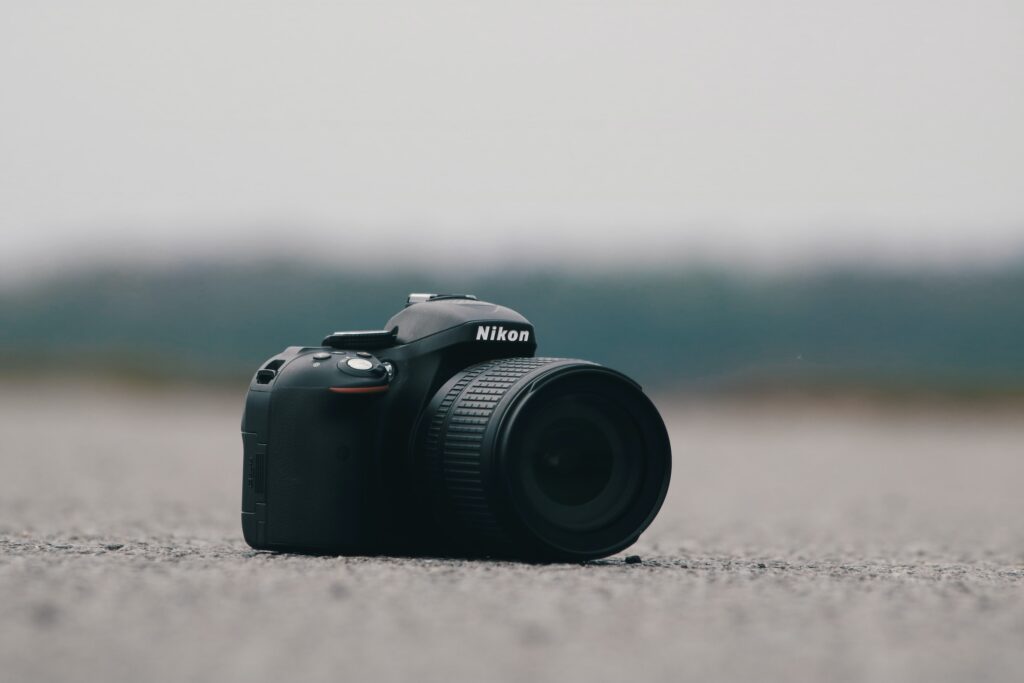
Standard / kit lenses are lenses with a focal length between 35mm and 85mm.
They are also known as normal lenses because they produce natural-looking images that are similar to what the human eye sees.
Standard / kit lenses have several advantages over other lens types.
They are versatile and easy to use because they can capture a variety of scenes and subjects without much distortion or compression.
They are also usually included with most entry-level DSLR or mirrorless cameras, which makes them affordable and accessible for beginners.
Another benefit of standard / kit lenses is that they are suitable for portraits or close-ups because they produce flattering facial features and a moderate bokeh effect.
They can also create a realistic and balanced perspective and depth in the images.
The main disadvantage of standard / kit lenses is that they are not very special or unique compared to other lens types.
They do not have a large aperture or a fast autofocus system, which limits their performance in low-light situations or fast-moving subjects.
They also do not have a wide or telephoto range, which limits their creative potential.
Some common standard / kit lens focal lengths and their uses are:
- 35mm: This is a standard lens that can capture a normal field of view of about 63 degrees. It can create a natural-looking perspective and depth in the images. It is ideal for documentary photography, everyday photography, group shots, etc.
- 50mm: This is a standard lens that can capture a slightly narrower field of view of about 47 degrees. It can create a slightly compressed perspective and depth in the images. It is ideal for portraits, street photography, food photography, etc.
- 85mm: This is a telephoto lens that can capture a narrow field of view of about 29 degrees. It can create a shallow depth of field and a bokeh effect in the images. It is ideal for close-up portraits, headshots, flowers, etc.
Have you just started your photography journey and want to learn more about how to use your kit lenses to its full potential? Be sure to read our ultimate guide here.
Telephoto Lenses

Telephoto lenses are lenses with a focal length longer than 85mm. They are also known as long lenses because they can magnify distant subjects and make them appear closer than they actually are.
Telephoto lenses have several advantages over other lens types.
They can capture details and emotions of faraway subjects such as sports, wildlife, concerts, etc.
They can also create a shallow depth of field and a bokeh effect in the images, which isolates the subject from the background and draws attention to it.
Another benefit of telephoto lenses is that they can create a compression effect in the images by making the distance between the foreground and the background appear smaller than it actually is. This can create a dramatic or cinematic effect in the photos.
The main disadvantage of telephoto lenses is that they are heavy and expensive compared to other lens types.
They are harder to carry around and more costly for beginners. They also require a tripod or a stabilizer to avoid camera shake, which can blur the images.
Some common telephoto lens focal lengths and their uses are:
- 100mm: This is a macro lens that can capture close-up details of small subjects such as insects, flowers, jewelry, etc. It can also create a 1:1 magnification ratio, which means that the subject appears as large on the sensor as it does in real life.
- 135mm: This is a telephoto lens that can capture candid portraits of people without disturbing them or making them aware of the camera. It can also create a soft and smooth bokeh effect in the images.
- 200mm: This is a telephoto lens that can capture distant subjects such as sports, wildlife, concerts, etc. It can also create a shallow depth of field and a bokeh effect in the images.
Comparison Table
| Lens Type | Focal Length | Field of View | Effect | Uses |
|---|---|---|---|---|
| Standard / Kit | 35-85mm | Normal (29-63 degrees) | Natural-looking images; moderate bokeh | Documentary, everyday, portrait, etc. |
| Telephoto | > 85mm | Narrow (< 29 degrees) | Magnify distant subjects; shallow depth of field; compression | Macro, candid portrait, wildlife, etc. |
Super-Telephoto Lenses

Super-telephoto lenses are lenses with a focal length longer than 400mm. They are also known as extreme telephoto lenses because they can magnify very distant subjects and make them appear much closer than they actually are.
Super-telephoto lenses have several advantages over other lens types.
They can capture extreme details and emotions of very faraway subjects such as birds, wildlife, moon, etc.
They can also create a very shallow depth of field and a bokeh effect in the images, which isolates the subject from the background and draws attention to it.
Another benefit of super-telephoto lenses is that they can create a very strong compression effect in the images by making the distance between the foreground and the background appear much smaller than it actually is. This can create a dramatic or cinematic effect in the photos.
The main disadvantage of super-telephoto lenses is that they are very heavy and very expensive compared to other lens types.
They are very hard to carry around and very costly for beginners. They also require a tripod or a stabilizer to avoid camera shake, which can blur the images.
Comparison Table
| Lens Type | Focal Length | Field of View | Effect | Uses |
|---|---|---|---|---|
| Telephoto | > 85mm | Narrow (< 29 degrees) | Magnify distant subjects; shallow depth of field; compression | Macro, candid portrait, wildlife, etc. |
| Super-Telephoto | > 400mm | Very narrow (< 10 degrees) | Magnify very distant subjects; very shallow depth of field; very strong compression | Bird, wildlife, moon, etc. |
Specialty Lenses

Specialty lenses are lenses that have unique features or functions that are not found in other lens types. Specialty lenses are used to create special effects or solve specific problems in photography.
Specialty lenses have several advantages over other lens types.
They can enhance creativity and innovation by allowing photographers to experiment with different perspectives, angles, magnifications, or distortions.
They can also address challenges or limitations that other lens types cannot overcome.
The main disadvantage of specialty lenses is that they are niche or specific for certain use cases.
They are not very versatile or convenient for general purpose photography.
They may also require additional accessories or techniques to achieve optimal results.
Some common specialty lens types and their uses are:
- Tilt-shift lenses: These are lenses that can tilt or shift the optical axis of the lens relative to the sensor plane. This allows photographers to control perspective, distortion, depth of field, or focus in ways that are not possible with regular lenses. They are ideal for architecture, landscape, product, or miniature photography.
- Macro lenses: These are lenses that can focus very close to the subject and produce high magnification ratios. This allows photographers to capture small details of tiny subjects such as insects, flowers, jewelry, etc. They are ideal for close-up or macro photography.
- Fisheye lenses: These are lenses that have an extremely wide angle of view and produce a circular or distorted image. This allows photographers to capture everything in front of them, including their own lens hood or filter. They are ideal for creative shots, panoramas, astrophotography, etc.
Comparison Table
| Lens Type | Feature or Function | Effect | Uses |
|---|---|---|---|
| Tilt-shift | Tilt or shift optical axis | Control perspective, distortion, depth of field, focus | Architecture, landscape, product, miniature |
| Macro | Focus very close and produce high magnification | Capture small details of tiny subjects | Close-up or macro |
| Fisheye | Have extremely wide angle of view and produce circular or distorted image | Capture everything in front of them; create artistic or fun effect | Creative shots, panoramas, astrophotography |
How to Choose the Right Lens Type for Your Photography Needs
Choosing the right lens type for your photography needs depends on several factors, such as:
- The subject matter: What are you photographing? Is it a landscape, a portrait, a wildlife, a product, or something else? Different subjects may require different lens types to capture them effectively.
- The desired outcome: What are you trying to achieve with your photos? Do you want to show a wide or narrow field of view, a shallow or deep depth of field, a natural or distorted perspective, a special or normal effect, or something else? Different outcomes may require different lens types to create them successfully.
- The available light: How much light do you have in your shooting environment? Is it bright or dark, natural or artificial, constant or changing? Different light conditions may require different lens types to handle them properly.
- The budget: How much money do you have to spend on your lenses? Are you looking for a cheap or expensive, basic or advanced, single or multiple lens option? Different price ranges may offer different lens types to suit your needs.
Some tips on how to choose the right lens type based on these factors are:
- Start with a standard or kit lens. This is a versatile and easy-to-use lens that can cover a wide range of focal lengths and situations. It is usually included with most entry-level cameras and is affordable and accessible for beginners.
- Add a prime lens. This is a high-quality and fast lens that can produce sharp and bright images with a shallow depth of field and a bokeh effect. It is ideal for portraits, street photography, food photography, etc. You can choose a focal length that matches your preferred style or subject matter, such as 35mm, 50mm, 85mm, etc.
- Add a zoom lens. This is a flexible and convenient lens that can change the focal length without changing the lens or moving around. It is ideal for general purpose photography, weddings, journalism, travel, etc. You can choose a range that complements your standard or kit lens, such as 18-55mm, 24-70mm, 70-200mm, etc.
- Add a specialty lens. This is a unique and creative lens that can create special effects or solve specific problems in photography. It is ideal for architecture, landscape, product, miniature, close-up or macro, creative shots, panoramas, astrophotography, etc. You can choose a type that matches your interest or challenge, such as tilt-shift, macro, fisheye, etc.
Conclusion
In this article, we have provided you with in-depth guides, reviews and tutorials on various lens types for beginner photographers.
You have learned about the main characteristics, advantages and disadvantages of each lens type, as well as some examples of their uses and effects.
By the end of this article, you have gained a better understanding of how to choose the right lens type for your photography needs.
We hope you have enjoyed reading this article and found it helpful and informative. Thank you for reading this article and we invite you to check out other articles or tutorials. Happy shooting!


